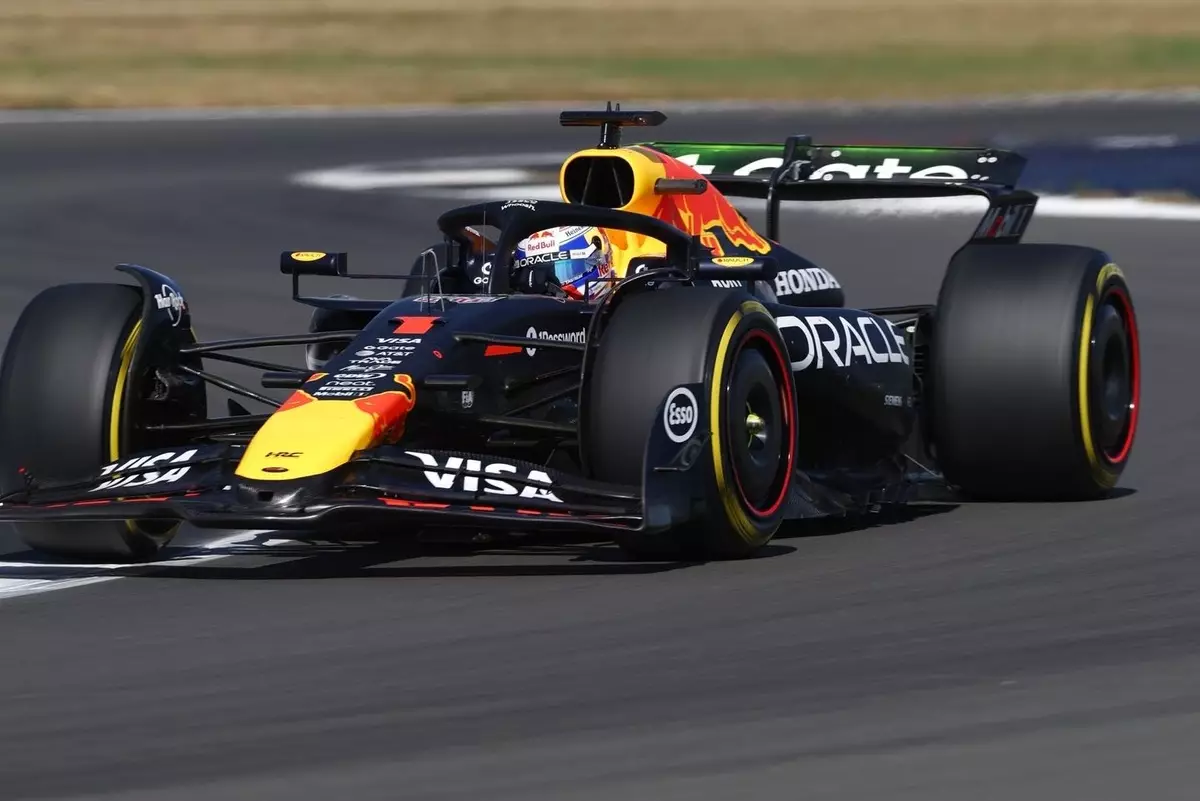In the high-octane world of Formula 1, performance fluctuations are inevitable, yet when a team like Red Bull, accustomed to winning, encounters setbacks, it raises questions about deeper issues. Max Verstappen’s candid reflections on a “bad day” during the British Grand Prix practice sessions reveal more than fleeting dissatisfaction; they hint at an underlying struggle within the reigning champions. His frustration underscores a team grappling with not only technical challenges but also the mental pressure of maintaining supremacy in a sport that relentlessly evolves.
Verstappen’s remarks about the car’s lack of balance and sensitivity to wind are symptomatic of a broader performance gap. The fact that his long-run pace was comparable to McLaren’s leading duo emphasizes that the raw speed is not entirely lost. Instead, it’s the consistency and handling—crucial factors in race weekends—that remain elusive. Such insights imply that Red Bull’s issues are multifaceted: aerodynamic inefficiencies, setup dilemmas, and perhaps an adaptability problem in unpredictable conditions.
Horner’s assurances about ongoing investments and new tools like the forthcoming wind tunnel reflect a team aware that incremental tweaks might no longer suffice. In an era where every millisecond counts, the reliance on technological upgrades signifies strategic recognition that current shortcomings extend beyond simple adjustments; they represent a need for systemic innovation. This realization is critical because it exposes the team’s vulnerability: being over-reliant on hardware advancements to compensate for strategic or setup shortcomings could be a risk if not complemented by skillful development.
The Human Side of a Competitive Fight
Beyond technical issues, the human element is increasingly evident. Verstappen’s apparent dissatisfaction and hints at possible future moves to teams like Mercedes suggest a shifting internal landscape. While Horner speaks confidently about his comfort with Verstappen’s contract situation, the mere possibility of a star driver contemplating a switch speaks volumes about the internal tensions and the high stakes involved. Verstappen’s dominance in recent years has made him the heartbeat of Red Bull’s identity; losing him would be a seismic blow.
Horner’s statements about “tools” and organizational improvements illuminate a critical truth: even the most successful teams understand the importance of evolution. They are acutely aware that maintaining a champion driver’s happiness— and, by extension, the team’s competitiveness—requires more than talent and resources; it demands strategic patience and relentless innovation. The acknowledgment of deficiencies, combined with proactive investments, signifies a team striving to restore its edge but also battling the intangible pressures of expectation and performance psychology.
Furthermore, the ongoing internal dialogue about car setup issues, such as understeer and aerodynamic balancing, signals a team still trying to find harmony between engineering ambitions and real-world conditions. It is a reminder that in F1, success is often dictated by the minutiae—the fine-tuning of grip, aerodynamics, and setup—that can make or break a race weekend. The fact that Red Bull recognizes these vulnerabilities openly demonstrates a level of transparency that is vital in turning around their fortunes.
Implications for the Future
Ultimately, Red Bull faces a dual challenge: engineering excellence and driver satisfaction. The evolving technical landscape requires them to push the boundaries of innovation, while the internal dynamics demand exceptional management and decision-making. Their current struggles with pace and handling could either be temporary hurdles or symptoms of deeper systemic issues—only time will tell.
However, the team’s proactive stance—investing in new facilities, acknowledging their challenges openly, and emphasizing organizational strength—gives a guarded optimism. Red Bull’s history of resilience and innovation suggests they are capable of recalibrating quickly if they address their core weaknesses. Yet, the pressure is mounting, especially with fierce competitors like McLaren, who have overtaken them not only in outright pace but also in confidence and momentum.
Verstappen’s future remains a crucial puzzle piece; his dissatisfaction, if left unresolved, could influence team dynamics and strategic priorities. Whether he remains motivated purely by winning or begins to seek new challenges will shape Red Bull’s trajectory in the coming seasons. The team’s willingness to adapt and invest will ultimately determine if they can reignite their dominance or risk falling behind in the relentless evolution of Formula 1.
In the end, Red Bull’s current predicament underscores a fundamental truth about competitive sports: sustained success is never guaranteed. It is a continuous race against time, technology, and internal resilience. As they scramble to restore their form, the underlying message is clear—perfection is a moving target, and only those willing to innovate relentlessly can hope to remain at the pinnacle.

